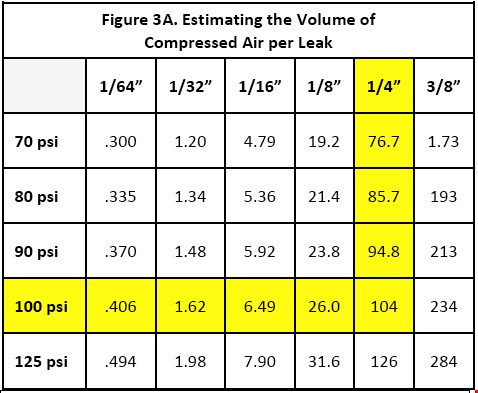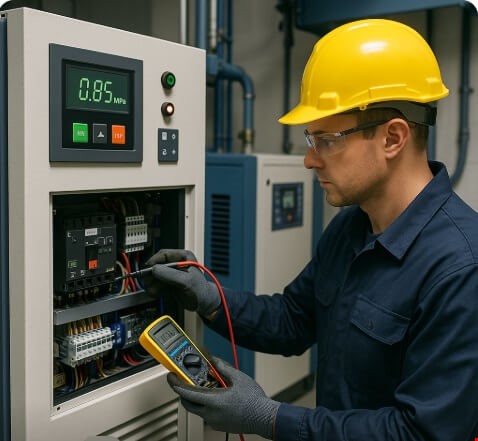This article deals in improvement of energy efficiency in industrial compressed air systems. In this article I shall address several issues that can affect the energy efficiency of a compressed air system. It was written in order to give the reader a better perspective on energy costs, as well as solutions to improve the situation and make the plant’s compressed air system more efficient, with significant savings in electricity costs.
Liran Dayssi, EL-AV Compressors Ltd. 3/14/2021
This article discusses energy efficiency in industrial compressed air systems. Throughout the article, I will discuss several topics that can impact the energy efficiency of the compressed air system. The article aims to provide the reader with a better view of energy costs and solutions that can change the situation, making the factory's compressed air system more efficient and significantly saving on electricity costs.
In recent years, there has been a significant increase in energy costs for industrial plants–water, gas, electricity. This situation has caused all manufacturers to emphasize energy efficiency, reducing wasteful energy consumption in the plant, and making the production processes more efficient and economical. In the center of electricity costs, which constitutes a significant and sometimes main part of the various energy costs of the plant. The different electricity costs consist of various consumers, such as heating, air conditioning, lighting, tools, and more. But one of the largest electricity consumers in most factories is the compressed air system, which can constitute about 50% or more of the plant's electricity costs. In a large number of production plants, they tend to ignore the compressed air system, a mistake that costs the plant a lot of money.
Obsolete compressed air systems, or systems that are not properly maintained, lead to high and wasteful electricity consumption, something that can be significantly changed by making several changes. In most cases, there are solutions that will significantly reduce electricity costs, which can even reach savings of 70-80% of the electricity cost for producing compressed air. Savings in electricity costs for producing compressed air will directly affect the plant's production costs and thus, of course, improve its profitability.
Below are several ways we can improve the air system:
Energy Survey for Compressed Air System
The survey is a tool that can be used to get a status picture of the compressed air system and its efficiency. Conducting an energy survey by a professional company with high-level equipment and receiving a detailed report at the end will provide the person responsible for the compressed air system with a status picture of the factory air demand during all working hours and the system's efficiency throughout the working hours. The report will also give a status picture of the quality, efficiency, and level of all elements of the compressed air system (dryer, water drains, etc.). The report will provide the reader with tools to improve the efficiency and operational status of the entire factory air system. It has been proven that conducting a professional and thorough energy survey for the compressed air system will lead to significant savings of tens of percent in energy and the system's operational costs.
Example from an Energy Survey Report:

Air Compressor
The air compressor is the main component in electricity costs for producing compressed air. There are several technologies of compressors for producing compressed air, such as – piston compressor, blade compressor, etc. The most common and efficient technology today is screw compressors, but even within this technology, there are different levels, qualities, and drive technologies. The oldest and least efficient technology is on-off control, which does not consider the factory air demand at all. The next is a variable speed drive (inverter), which adjusts its output according to the factory air demand, significantly reducing electricity consumption. The most efficient technology today is a variable speed drive compressor with a permanent magnet motor, which is significantly more efficient than the standard motor in both output and flexibility in speed change.
In fact, even in the compressor itself, the highest cost over its lifetime is the electricity cost, as can be seen in the following figure:

Cost Comparison Over Compressor's Lifetime
As can be seen in the graph, approximately 85% of the compressor's lifetime cost* is electricity cost, the remaining 15% are purchase and maintenance costs. On average, it is possible to save about 35% of the electricity cost by upgrading the compressor to an inverter compressor. For example: a 100 HP (75KW) compressor that works about 7,000 hours a year, with an hourly electricity cost of about $12.50-13.75. Its annual electricity cost will be approximately **$95,000 and above, assuming it is a non-variable speed compressor in good condition and of high quality. If we upgrade this compressor to an identical one with a variable speed drive, the average annual saving will be about $33,250. In fact, over the compressor's lifetime, the electricity cost will be about $950,000, and the saving will be about $332,500. Today, in addition to the inverter, there is a permanent magnet motor technology, which provides higher efficiency by about 15%, compared to a variable speed compressor without a permanent magnet motor, and improves the air production capacity and electricity consumption of the compressor. By upgrading to a compressor with permanent magnet technology, it is possible to save about 50%*** on average, compared to 35% in a standard inverter compressor.
In addition to the technological upgrade, it is recommended to adjust the working pressure to the actual factory requirements. Working at higher pressure than required leads to significantly higher air production costs.
* The assessed lifespan is 10 years.
** For calculating the annual cost: engine output calculated 75kw*1.2sf= 90kw, electricity cost according to the Electric Company 0.125 USD, and 7000 annual working hours, 90X0.125X7000=78,750.
*** The calculated saving is compared to a compressor without a variable speed drive.
Additional Components
In addition to the air compressor, there are other components in the air system, whose upgrade or replacement will improve electricity consumption, such as:
Old and inefficient air dryers, mainly adsorption dryers that lose a high amount of air in each work cycle. In modern models with advanced control systems and valves, it is possible to save about 50% in energy consumption compared to old models. Old cooling dryers that work with inefficient cooling compressors, and outdated liquid release systems, whose upgrade can improve energy consumption by an additional 15-20%.
Water drains operated by a timer, causing significant air loss during liquid drainage, can be replaced with smart drains that are activated by liquid level and save about 70% on electricity costs.
Air storage tanks, whose adaptation to factory needs and the compressed air system alike, will significantly impact the efficiency of the air system, as will the factory air piping.
Factory air piping is a central component in the energy efficiency of the compressed air system. Proper planning of the piping route, pipe diameter, and proper ongoing maintenance, including leak detection and repair, will significantly impact the efficiency of the compressed air system. Repairing air leaks in the factory piping and production machines will lead to savings of tens of percent. In many factories, attention is not paid to this issue, but air leaks are wasted energy estimated at hundreds of millions of dollars annually in the Israeli industry.
See table for calculating air leaks and their cost:
Example of Air Leak Calculation

This table shows the amount of air that leaks per minute, according to the hole diameter and working pressure in the air line. To illustrate the cost of the leak(s) in money, we
will convert the amount of air to kWh*, the energy we will invest to produce the air. For example, with a "1/4" diameter and 7 bar pressure, the amount of leaking air is 2945 liters per minute. To produce this amount, we will invest between 18-22 kWh (depending on the type and condition of the air compressor). On average, about 20 kWh, the cost per kWh for industry (according to Electric Company data) is 0.125 USD per kWh.
A factory that works about 7000 hours a year with the air system will waste about $8,750 a year on such an air leak.
* Kilowatt-hour
Summary
In conclusion, it can be determined that the compressed air system may be a very large energy consumer if we do not pay enough attention to the data presented in this article. As you read in the article, there are many and varied ways to make the compressed air system in your factory more efficient. It is highly recommended to consult with a professional company, with extensive knowledge in the field. Request a professional to come and perform a review of the compressed air systems in order to receive recommendations on how to act to improve the energy efficiency of the compressed air system, leading to savings in electricity costs for the factory.
This might also interest you:

Drying & Filtering Compressed Air = Money

5 Common Industrial Air Compressor Problems & Solutions